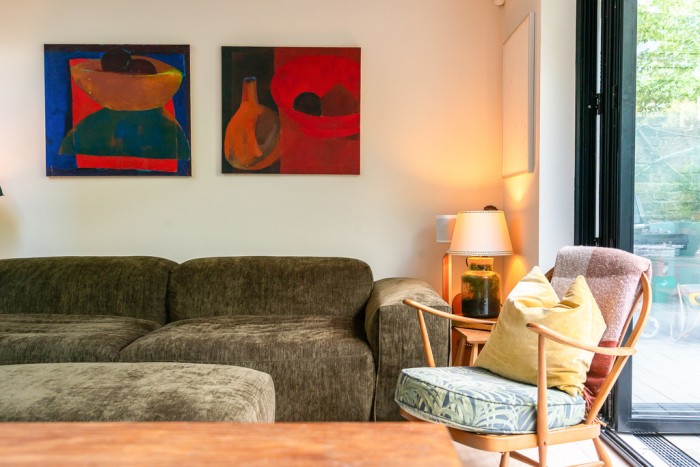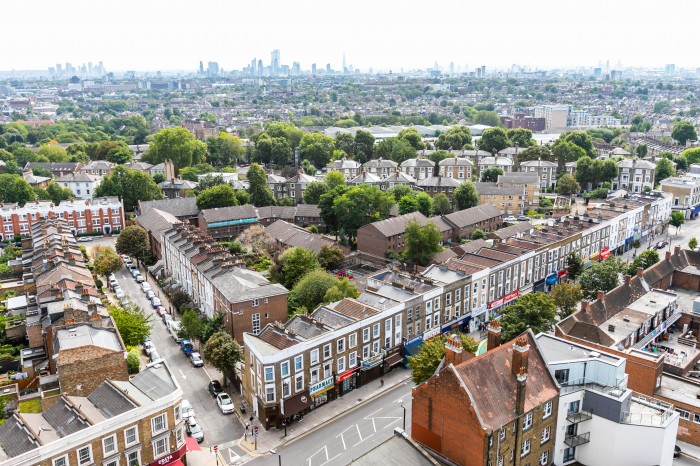How To Deal With Mould
Posted in January 2023
Damp and mould are common problems for landlords, their tenants and many homeowners. So it's especially important during these cold winter months to understand the causes of mould and finding the best ways to prevent the dreaded black spots from getting any worse.
The steep increase in energy bills mean that many are thinking twice before heating their homes and this is a contributory factor to dampness, which increases the chances of condensation that can easily turn into mould.
To prevent this from happening, the relative humidity should be reduced below 70%. Therefore, the World Health Organisation recommends keeping rooms ideally between 18C and 20C to maintain the best indoor air quality.
Whilst our instinct is to close our windows when it’s cold to maintain the warmth, good ventilation is essential if mould is to be kept at bay.
It’s also a misconception to think that turning up the central heating can dry out the moisture, as a dramatic rise in temperature can also make the condensation worse. So, a gradual adjustment of your heating just a couple of degrees every half hour is the better option.
According to the British Standards Institution’s Code of Practice on Moisture Management, an average family of four generates around 24 pints of water a day due to bathing, cooking, washing and drying clothes. This has increased over recent years due to the pandemic and subsequent lockdowns which meant people spending more time indoors.
Ways to Tackle Mould Yourself
To begin with, it’s important that the affected area is well ventilated both during and after treatment. Ensure that you wear protective equipment such as gloves and a face mask to avoid the inhalation of spores.
Popular anti-mould recommendations on the Mumsnet forum include:-
Astonish Mould and Mildew Blaster (Wilko £0.95) which is a long lasting cleaning solution and when used regularly, can help prevent the return of mould. Ideal for use on walls, uPVC window frames, glass, plastic shower curtains, bathroom tiles, grout, silicone sealant, concrete, sinks and plugholes.
HG's Mould Spray (Wickes £5.50) is an effective mould remover spray & mildew cleaner and also prevents re-growth . It is suitable for a wide range of surfaces including plastered walls, tiles, bathroom seals, grout and windows.
When using the above cleaners, it is advisable to use a microfibre cloth to wipe off the mould and then rinse the dirty cloth in a separate container to prevent spreading.
Both sprays are affordable and available from major supermarkets and DIY stores.
For porous surfaces such as paint, marble, granite, plaster etc. Bleach appears effective, but only wipes away the surface growth of mould, which ultimately means it could grow back if not treated effectively. Therefore, a product that contains fungicide provides longer term protection such as:-
Polycell 3-in1 Mould Killer (Wilko £7). This contains a powerful fungicide which kills and removes mould. It prevents re-growth in one single application. Ideal for preparing mould prone areas before painting to give a better paint finish. Tools required for application are brush, damp cloth and gloves.
If you prefer a more natural approach, pour half a cup of white vinegar and the same amount of distilled water in an empty spray bottle with five drops of tea tree essential oil (optional) and ten drops of clove oil. This too has been hailed as an effective DIY mould killer. Just shake the mixture well and then spray onto the affected areas. Leave to dry for an hour minimum and repeat if necessary.
Once the mould has been removed from painted areas, it is advisable to sand down any of the flaking paint before applying products such as:-
Ronseal 6 Year Anti Mould Paint (Homebase £23 for 750 ml). Thispreventive measure resists moisture and steam and stops common mould growing on your walls or ceilings for up to six years. It's ideal for use in kitchens and bathrooms etc.
Understanding Damp and Mould
Damp and mould is a common problem area for landlords and their tenants, regardless of the age of the rental property. It’s important that both parties understand the causes and best ways to prevent the problems from worsening. Ben Burilowski, Director from RICS accredited Surveyors Walker Management has written this useful guide to help both landlords and their tenants deal with the causes of damp and mould and it’s something we provide at move-in for all David Andrew rented properties.
Condensation
Condensation occurs in a dwelling when warm moist air produced by ordinary activities such as showering or cooking meets a cold surface such as an external wall or window.
The moisture laden air will remain internally if ventilation does not occur and will gravitate towards the nearest cold surface where it condenses.
Moisture is also naturally occurring in the air and when air temperatures drop it will release this water in droplet form. This is known as the dew point.
Condensation generally occurs during cold spells of weather. It will appear on cold surfaces and also in microclimatic areas where there is little movement; for example behind a cupboard. This will often lead to the formation of mould growth and mainly occurs in corners of rooms, in cupboards or on north facing walls, as these are generally the coldest.
Could damp be caused by something else?
Yes. Condensation may not be the only factor when mould growth occurs.
Rising damp can occur if the damp proof course or membrane within the walls or floors of your dwelling has been breached. Prevalent in ground floor flats as well as houses due to damp proof course failure, something that generally occurs over a long period of time.
Penetrating damp. Rain may also seep through cracks in brickwork or through missing tiles on external roof surfaces.
Blocked guttering may also mean water spills over and saturates external walls.
External plumbing which is cracked may allow seepage into internal parts.
It can be difficult to be certain of the exact cause of any dampness and so unless you are sure it may be wise to contact an RICS qualified surveyor or an experienced contractor who has experience working in this particular area.
Condensation will not be limited to certain areas and may cause growth in different areas of a room and you may also notice furniture and clothing becomes affected.
Examples of condensation
Lack of insulation at construction
Properties constructed during certain eras did not have the more stringent construction and insulation levels now required in new development. As a consequence they are potentially more susceptible to the development of condensation than modern buildings.
Areas where this can occur are areas of a property that were difficult to insulate at construction such as above or below balconies or under crofts.
Insulation causes a warming effect which helps to counteract the conditions under which condensation can develop. Cold spots/bridging Certain construction elements such as concrete beams by their very nature are cold and that insulating them to bring them up to modern standards can prove to be difficult.
As a consequence many properties have cold spots or suffer from thermal bridging. Equally, when properties are refurbished insulation can be removed which increases the possibility of cold bridging and the like becoming a problem.
Lack of ventilation
The development of condensation can be controlled in part by increasing ventilation throughout the dwelling. In tenanted properties there is a preconception that ventilation means higher heating bills and as such there are growing examples of condensation which is exacerbated by the blocking up of trickle vents (vents within window frames) or traditional air vents which are found individually within rooms.
Remedies and Precautions
How to avoid condensation
With the correct balance of heating and ventilation, condensation should be avoided. The heating helps keep the property warm and the ventilation will enable excess moisture laden air to escape.
TIP: Improving ventilation (opening windows, trickle vents). Using the thermostat. Set it on for long periods on a low setting or have it switched to operate automatically on shorter periods for at least seven hours a day. Do not adjust the thermostat manually when set but trust the system to regulate itself for you. Make sure there are no cold zones in the home by turning all radiators on.
TIP: Improving heating (constant temperature space heating). Landlords and agents should tell tenants how to best manage any problems and provide the information below:
How to combat moisture production
- Cover saucepans
- Dry clothing outside rather than on radiators.
- Wipe away condensation as quickly as it’s spotted.
- Keep window trickle vents open constantly and open windows as much as possible (especially after cooking or showering) to allow a through flow of air whilst maintaining a heat balance.
- Ensure extractor fans are operational, you can test pull by holding a sheet of tissue paper against it and seeing if it sticks.
- Turn on the cold tap of the bath first so that when the hot water hits its doesn’t produce as much steam.
- Close doors in wet areas to stop the spread of moisture to other rooms.
- Where possible position cupboards and drawers etc. against internal walls.
Interesting fact
How much moisture is typically produced in the home?
• Drying clothes produces ten pints of water in an unvented tumble dryer.
• Having a bath produces two pints of moisture.
• Washing clothes produces one pint of moisture.
Fighting mould
Remove mould growth by wiping down walls and windows with a fungicidal wash recognised by a Health and Safety Executive ‘approval number’. Follow the manufacturer’s instructions precisely. Dry clean mildewed clothes and shampoo carpets. Take care because disturbing mould can increase the risk of respiratory problems.
After treatment, redecorate using a good quality fungicidal paint to help prevent mould recurring.
Ensure insulation to external walls is in place
For landlords who want to take more intrusive measures to deal with structural problems consider: -
Increasing insulation (EWI, IWI, cavity Ffill, double glazing)
- Improving ventilation (fan installation, opening windows, trickle vents, Passyfier Vents)
- Improving Heating (constant temperature space heating)
For further information on the useful information relating to dampness and condensation, please contact:-
Royal Institution Chartered Surveyors: www.rics.org/uk
Property Care Association: www.property-care.org
Health & Safety Executive: www.hse.gov.uk
Walker Management: www.walkermanagement.co.uk
Latest posts
Free property valuation
With three local offices we have unrivalled market knowledge. A senior member of the David Andrew team will come to your property to provide an accurate sales valuation or rental valuation and offer comparable properties we have sold in order to justify our valuation and to show how we can achieve you the best possible price.
Register with us
Register today to receive instant alerts when we add properties that match your requirements.


